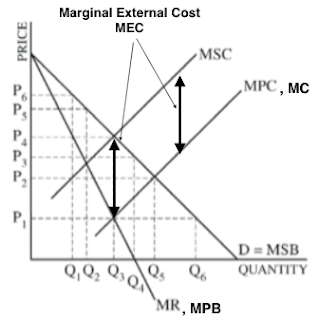2017 AP Microeconomics FRQ #2
Watch me answer it here,
(A) If the firm uses one unit of capital and one unit of labor, will it be operating with constant, increasing, or decreasing returns to scale? Explain using numbers from the table.
Ok, if we are talking about Returns to Scale, then we must be talking about the long run.
If the firm is using one unit of labor with one unit of capital in the short run, and then we compare the additional output that can be produced by doubling not only labor but also Kapital the we see that the returns have more than doubled.
When we have 1unit of labor and 1 unit of Kapital we can produce 10units of output
but if we double the amount of labor to 2units and double the Kapital to 2units we can produce 50units of output.
By doubling all inputs the output more than doubled from 10 - 50 units.
Answer
(B) Assume now that the firm currently has two units of capital and is using three units of labor.
(i) Calculate the marginal product for the third unit of labor. Show Your Work.
So if we are using K2, then we have moved into the present short-run with K2, so compare the K2 numbers. I found it useful to just combine the Labor costs and the costs of K1, and then add the additional cost of K2 ($75).
1 Unit of Labor - Labor ($200) + K1 ($75) + K2 ($75) = $350
2 Units of Labor - Labor ($400) + K1 ($75) + K2 ($75) = $550
3 Units of Labor - Labor ($600) + K1 ($75) + K2 ($75) = $750
Marginal Product is simply 50 to 75, which is a marginal product of 25 for the 3rd worker.
(ii) Did the firm experience diminishing marginal returns with the addition of the third unit of labor? Explain using numbers from the table.
The firm experienced diminishing returns with the addition of the 3rd unit of labor. The marginal product of the 3rd worker is 25, which is less than the marginal product of the 2nd worker which is 30.
(DECREASING MARGINAL RETURNS: In the short-run production of a firm, an increase in the variable input results in a decrease in the marginal product of the variable input.)
(iii) Calculate the firm's average total cost for its current level of production. Show Your Work.
The average total cost is sometimes referred to as the per unit total cost since it is calculated by taking the total cost of production and dividing that by the number of units produced (quantity). In variable form, it looks like this:
TC / Q = ATC
Where fixed costs + variable costs (quantity) = TC
ATC is total costs (labor and capital) divided by the amount of total output.
(iv) If the firm's output is sold in a competitive market, what is the lowest output price at which the third unit of labor would be hired?
So, if I understand this question, they are asking what is the lowest price (of the good) that would make hiring worker number 3 possible.
Again, This problem has challenged my summer mind. Take the answers with a grain of salt.
Trust but verify. This is like when you buy a used car, if it breaks in half after you drive it off the lot, you own both pieces.
My thinking is that the cost of capital (K1 & K2) aren't added into the marginal cost numbers as capital in the short-run is considered fixed and therefore not included in the marginal cost.
Therefore,
This makes sense as as we add more labor and as marginal product decreases then marginal costs must be increasing.
Where MRP = MRC, Marginal Revenue Product = Marginal Revenue Costs
MRP (what the worker brings in) = MRC (what the worker costs)
If our MRC, is $200 then to be able to hire the 3rd worker she must at least bring in $200, where
MRC = MRP.
Since we know that the MRP is MP x P (of the good), then the minimum that the output price of the good could fall would be $8.
Answer


































